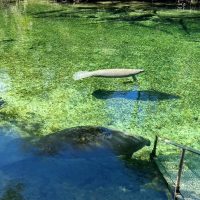Ponta Delgada is a small city of around 70,000 people located on the island of Sao Miguel in the Azores. Situated west of Portugal in the Atlantic Ocean, this area has been continuously inhabited since at least 1444, when small fishing villages were established around the islands. In the early part of the 19th century, Ponta Delgada was of significant economic importance to Portugal and at one point was actually considered the third largest city based on economic strength and population. The farm land surrounding the city at one point had a major citrus industry, trading extensively with the United Kingdom.
During the 15th and 16th centuries, the Azores were used as a popular stopover with ships traveling from Europe to the new world. It is thought that Christopher Columbus stopped over at the Azores while returning from America, but that item doesn’t appear to be well documented.
Today, the major industry of the Azores is agriculture, particularly dairy. It does have a reputation of producing some of the best pineapples in the world too.
Tourism is alive in the Azores with about 60 cruise ships visiting each year. There is also a vibrant airport with flights from the US and Canada as well as many cities in Europe. It’s considered by some to be a convenient stop-over while traveling to and from Europe and America since it’s situated only four hours from Boston and three hours from Lisbon. This enables people to stop here and avoid the inevitable “jet lag” associated with traveling long distances.
With a thriving agricultural economy as well as an emerging tourist trade, the Azores is far from a backwater rock in the Atlantic. Many of its population have spent time living in America and are therefore fluent in English.
Visiting a place from a cruise ship as we did this year is not always a good way to evaluate its potential as a tourist destination, or even as a destination where we may or may not like to spend more time. The day we arrived, it was raining, dreary, foggy, and drizzly. We were unable to get any good images because the cameras aren’t waterproof and therefore spent much of the time under our rain gear. We were not surprised or particularly upset about the condition though. From the appearance of the landscape, it was clear that they get a tremendous amount of rain. There were pastures everywhere with tall grass, and while it was common to have cattle in every pasture, there was no sign of overgrazing anywhere. Apparently there’s enough rain to produce large amounts of grass for a very large cattle population. In the forests, the predominant tree seemed to be the Japanese Cedar, which looks much like smaller versions of redwood trees growing in California coastal forests. Combined with the large amount of ferns, it was clear that these islands have a mild, not quite tropical climate.
Our visit consisted of leaving the cruise terminal in Ponta Delgada and traveling by bus to the village of Cete Cidades (seven cities) and the lakes of Lagoa Verde and Lagoa Azul (green lake and blue lake). Cete Cidades is situated in a more or less dormant volcanic caldera, its last eruption occurring about 2,000 years ago. From there we made a brief stop at Logoa de Santiago, then back down to the city of Sao Miguel where we visited a small pineapple plantation. Actually, this facility looked like a small demonstration “plantation” set up for the benefit of tourists. There were several moderate sized green houses containing pineapple plants in various stages of growth, and while it was interesting to view, there seemed to be far too plants in production to be considered a world famous pineapple facility. And of course, there was the customary gift shop that seems to be present in all cruise ship tours.
The question then is, was a stop at the Azores worth it as a tourist spot? The answer, to us, isn’t all that clear. If we happen to be on a cruise again that happens to stop by the Azores, we’ll certainly go ashore and spend some time. After all, the country side is beautiful, the people seemed quite friendly, and there seems to be plenty to do if you have a little time. And if we happened to be traveling to or from Europe by aircraft and it was convenient to stop at the Azores for a day or two, we certainly would consider it. Again, the people were friendly and there seemed to be quite a bit to do for a day or two. But would we consider it as a vacation destination? Probably not. In the end, it’s too far out of the way to be convenient unless it can be combined with a trip to somewhere else, and it simply didn’t have enough of a draw by itself to make a complete destination all by itself.
Spending a day in the Azores can bring mixed results. Much of what they have to offer is because of the large amount of rain, and of course, if you only have a day, or a few hours, it’s likely to be raining. We made these drizzly images from the island of Sao Miguel, near the city of Ponta Delgado.









